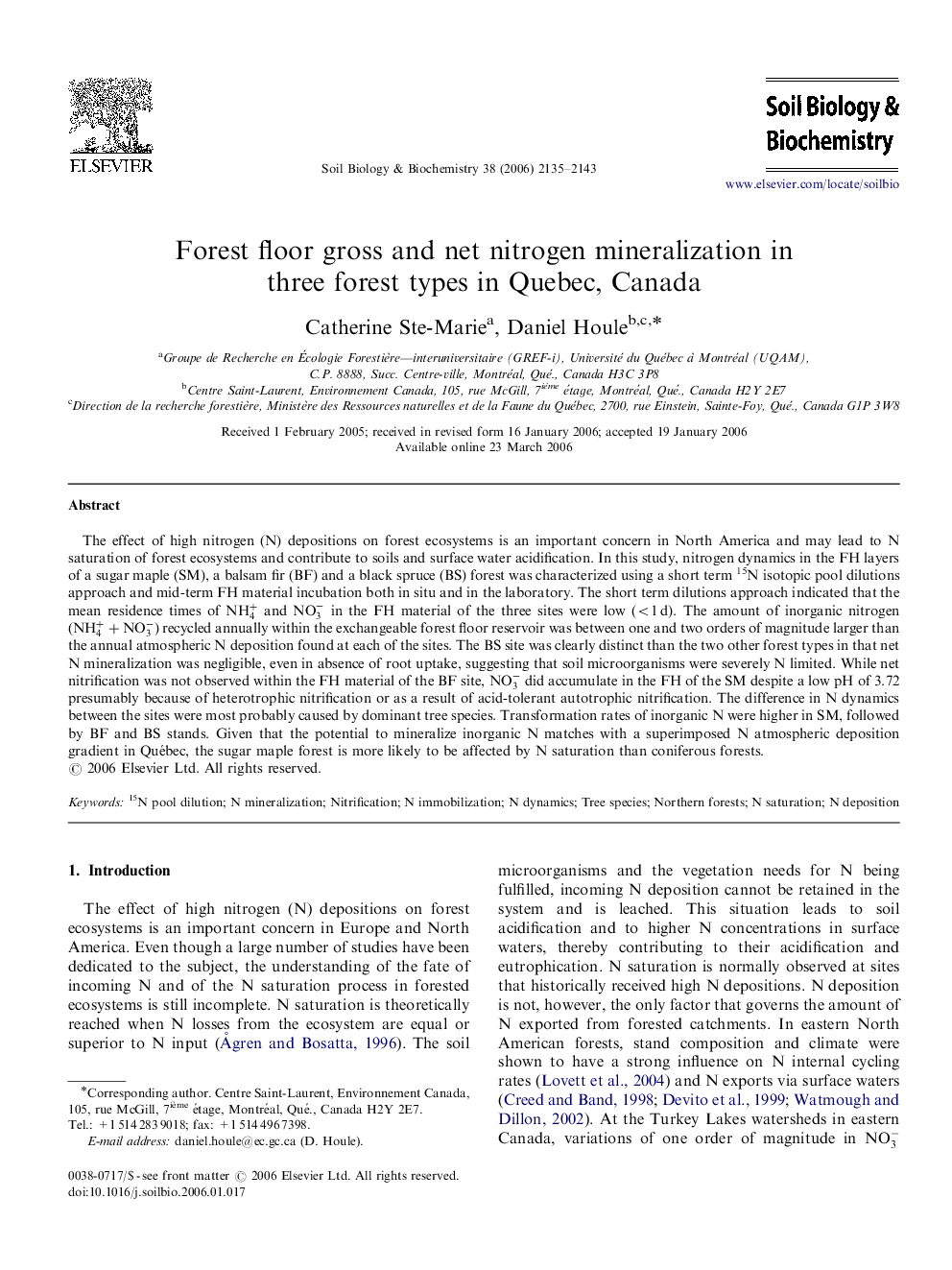| کد مقاله | کد نشریه | سال انتشار | مقاله انگلیسی | نسخه تمام متن |
|---|---|---|---|---|
| 2027179 | 1070097 | 2006 | 9 صفحه PDF | دانلود رایگان |

The effect of high nitrogen (N) depositions on forest ecosystems is an important concern in North America and may lead to N saturation of forest ecosystems and contribute to soils and surface water acidification. In this study, nitrogen dynamics in the FH layers of a sugar maple (SM), a balsam fir (BF) and a black spruce (BS) forest was characterized using a short term 15N isotopic pool dilutions approach and mid-term FH material incubation both in situ and in the laboratory. The short term dilutions approach indicated that the mean residence times of NH4+ and NO3- in the FH material of the three sites were low (<1 d). The amount of inorganic nitrogen (NH4++NO3-) recycled annually within the exchangeable forest floor reservoir was between one and two orders of magnitude larger than the annual atmospheric N deposition found at each of the sites. The BS site was clearly distinct than the two other forest types in that net N mineralization was negligible, even in absence of root uptake, suggesting that soil microorganisms were severely N limited. While net nitrification was not observed within the FH material of the BF site, NO3- did accumulate in the FH of the SM despite a low pH of 3.72 presumably because of heterotrophic nitrification or as a result of acid-tolerant autotrophic nitrification. The difference in N dynamics between the sites were most probably caused by dominant tree species. Transformation rates of inorganic N were higher in SM, followed by BF and BS stands. Given that the potential to mineralize inorganic N matches with a superimposed N atmospheric deposition gradient in Québec, the sugar maple forest is more likely to be affected by N saturation than coniferous forests.
Journal: Soil Biology and Biochemistry - Volume 38, Issue 8, August 2006, Pages 2135–2143